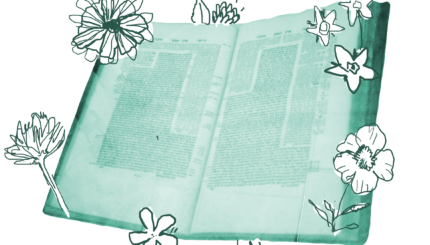Commentary on Parashat Vayechi, Genesis 47:28 - 50:26
Has there ever been a more dysfunctional family recorded in history than ours? Probably, but the fact that our forebears were distinctly human is a source of comfort and strength, both offering us guidance in what to do (and what not to do) and validating the challenges of our day-to-day lives. Parashat Vayechi gives the notion of family, and the diversity therein, great clarity.
His family reunited, Jacob calls his sons together for a fond (mostly) farewell. Each receives a blessing of sorts, or at least a bird’s eye view into his future.
Genesis 49:1-27
Jacob called his sons and said, “Gather together that I may declare to you what lies before you in time to come.
Gather around, sons of Jacob, and listen; listen to Israel your father.”
Reuben, you are my first-born… you shall not be foremost, for you mounted your father’s bed…
Simon and Levi are brothers, they carried out their malicious plans…. I will scatter them among Israel.
Judah, your brothers shall praise you…
Zebulon lives by the shore of the sea…
Isachar is a strong ass…. He became a slave to forced labor.
Dan is a judge of his people….
Gad, robbers rob him, and he, he robs and pursues them.
Asher, his bread is rich, he provides food fit for a king.
Naphtali is a swift hind, dropping beautiful fawns.
Joseph is a fruitful creeper near the spring…. May [blessings] descend on Joseph’s head…
Benjamin is a ravening wolf….
Torah Navigator
1. We can look at each of Jacob’s sons, the 12 tribes of Israel and assign 12 different personality types to our students, or even twelve different ways that each student may present him or herself at any given time. What can we learn from Jacob’s approach that we can import into our own life’s work?
2. How do we not only effectively master the balance between communal and individual needs in our work, but also model and teach that challenge to our students who will often find themselves in the same position? (For an interesting insight on this question, see page 256 in The Orchid Thief, by Susan Orlean)
3. The more difficult challenge may actually be rendering all the individual personalities into a single klal, or whole. The United States Army is now changing its slogan from “Be all that you can be” to “An army of one,” responding to the powerful force of individualism in our society. What links us together? Is it religion? Culture? Anthropologist Clifford Geertz wrote that “sacred symbols synthesize a people’s ethos.” How can we present these symbols as personally meaningful as well as communally binding?
4. As the last portion in the book of Bereshit (Genesis), we conclude the reading of Parashat Vayechi with the words, “Hazak, hazak, v’nitkhazek,” “Be strong, be strong and let us strengthen one another.” How does the Torah answer our questions about the source of that strength?
A Thought
Jacob speaks to each son individually, offering a comment on that son’s strengths, gifts and abilities, and in some cases, weaknesses. It would have been far easier to offer a generalized hope for their futures, but Jacob opts to make the moment personally meaningful for each son.
I’m reminded of the recent New York Times obituary for Millicent McIntosh, former president of Barnard College, who completed her life’s work last week at the ripe old age of 102. The obituary noted that she initially sent each of her five children to a different school, reflecting each child’s needs and personality. She gave up one year, after attending five different Christmas pageants at five different schools and thinking she couldn’t bear to hear “Silent Night” even one more time. The children were consolidated into a single school. At that point the needs of the family as a whole needed to supersede the needs of the individual.
Whether we are talking about five, 12 or more, the effort to balance the needs of the individual with the needs of the group is ongoing. We are most effective when we can make the moment personally meaningful, but we are lost if we do so to the detriment of establishing a connection to the larger whole.
It’s funny to think of Parashat Vayehi as the end of the beginning. It is the end of the stories of the patriarchs and matriarchs, but it is the precursor to the experience of enslavement and exodus. (See the Semisonic’s song “Closing Time”–“every new beginning comes from some other beginning’s end.”)
We begin the enslavement experience as individuals, represented by Jacob’s twelve sons and even after years of bondage, we leave Egypt as an erev rav, a mixed multitude. The incorporating experience which focuses more attention on the “Israel” in our name rather than the “b’nei” (as in b’nei Israel, the children of Israel) is the revelation at Sinai.
Even at Sinai, the midrash tells us, God spoke in one voice, but each person heard God’s words in a way that was personally meaningful. Jacob’s parting words are a foreshadowing of that moment, an understanding that unity and diversity are not mutually exclusive. They are a charge to us to leave no member of our extended family behind as we grow forward, together, toward a greater good.
Provided by Hillel’s Joseph Meyerhoff Center for Jewish Learning, which creates educational resources for Jewish organizations on college campuses.
Torah
Pronunced: TORE-uh, Origin: Hebrew, the Five Books of Moses.



